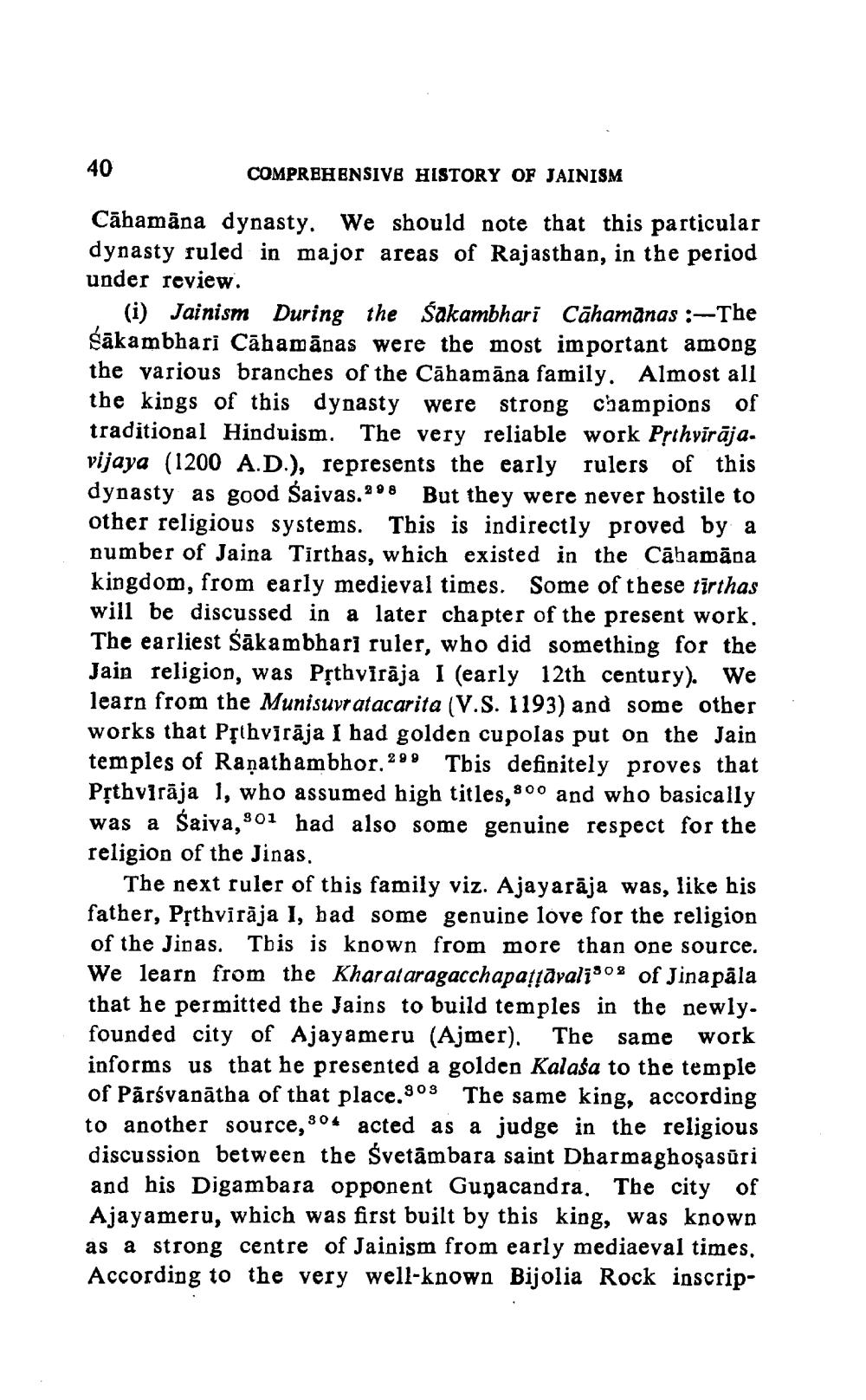________________
40
COMPREHENSIVE HISTORY OF JAINISM
Cābamāna dynasty. We should note that this particular dynasty ruled in major areas of Rajasthan, in the period under review.
(i) Jainism During the sakambhari Cāhamānas :--The Sākambhari Cāhamānas were the most important among the various branches of the Cāhamāna family. Almost all the kings of this dynasty were strong champions of traditional Hinduism. The very reliable work Prthvīrāja. vijaya (1200 A.D.), represents the early rulers of this dynasty as good Šaivas. 208 But they were never hostile to other religious systems. This is indirectly proved by a number of Jaina Tirthas, which existed in the Cahamâna kingdom, from early medieval times. Some of these tirthas will be discussed in a later chapter of the present work. The earliest Sākambhari ruler, who did something for the Jain religion, was Pșthvirāja I (early 12th century). We learn from the Munisuvratacarita (V.S. 1193) and some other works that Pţthvīrāja I had golden cupolas put on the Jain temples of Raņathambhor. 2 9 9 Tbis definitely proves that Pţthvīrāja I, who assumed high titles, 800 and who basically was a saiva, 901 had also some genuine respect for the religion of the Jinas.
The next ruler of this family viz. Ajayarāja was, like his father, Pșthvirāja I, bad some genuine love for the religion of the Jinas. Tbis is known from more than one source. We learn from the Kharataragacchapastāvalī80% of Jinapāla that he permitted the Jains to build temples in the newly. founded city of Ajayameru (Ajmer). The same work informs us that he presented a golden Kalaša to the temple of Pārsvanātha of that place.909 The same king, according to another source, 304 acted as a judge in the religious discussion between the Śvetāmbara saint Dharmaghoşasūri and his Digambara opponent Gunacandra. The city of Ajayameru, which was first built by this king, was known as a strong centre of Jainism from early mediaeval times, According to the very well-known Bijolia Rock inscrip




